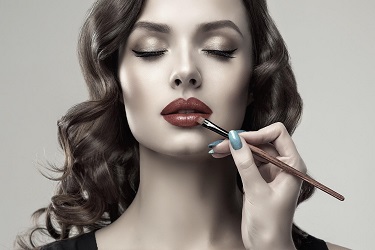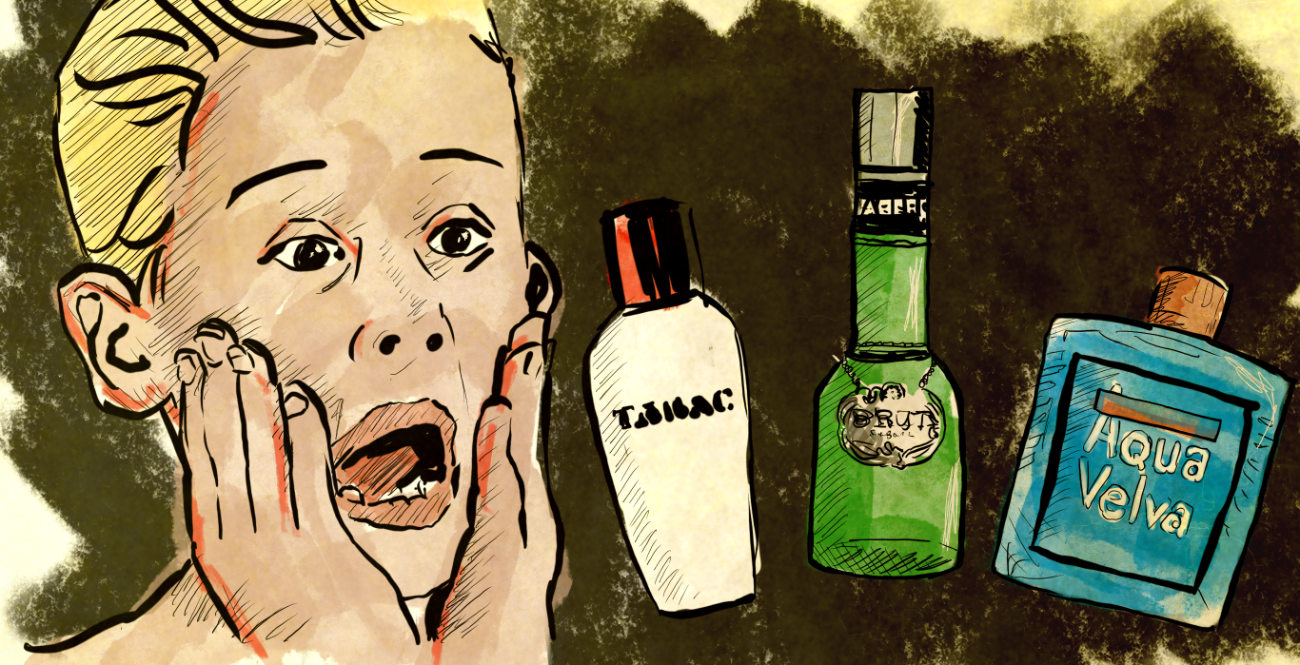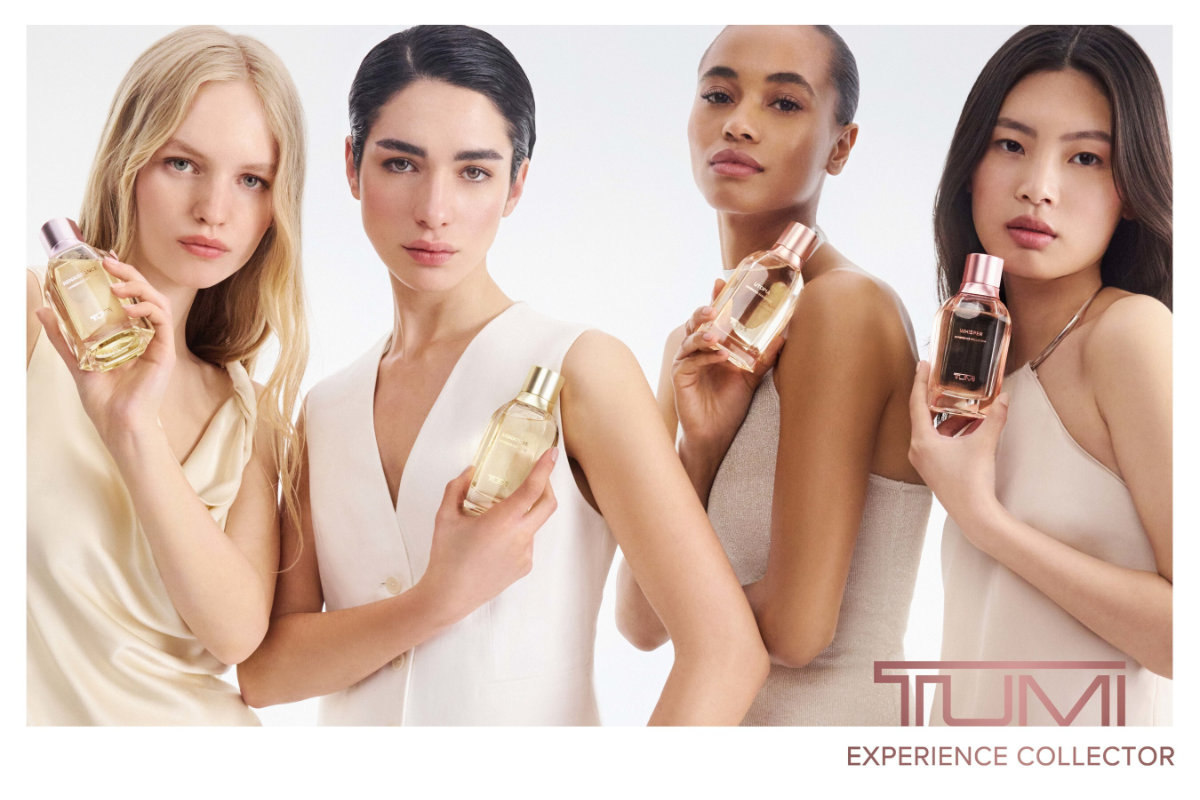Some adventurous men in the middle classes (then working classes) took up learning the straight-razor themselves if they didn’t want a regular expenditure for visiting the barber, and alongside such self-shaving came a need for take-home grooming products, which included some sort of “after-shave” tonic, lotion, cream, or powder.
These days however, with straight razors and safety razors giving way to disposable, often pre-lubricated ones, then eventually electric razors, the need to prepare for a shave have for some been almost eliminated. Therefore, why should anyone have a preparation for after the shave either? It isn’t uncommon for folks nowadays to just butcher themselves with a cheap Bic disposable or pre-lubed multi-bladed cartridge like Gillette’s Mach 3, or just use a Norelco or Remington you can get for a song from a local big-box retailer, with the very act of shaving itself being seen less as a relaxing zen moment, and more of a chore to barrel through quickly and conveniently as possible.
As such, that final touch many older gentlemen know as the after-shave gets completely passed up, even if functionless perfume like a bottle of Dior Sauvage still gets doused on before heading out the door for some people.
From Make-Do to Marketed Product
Still, aftershaves shouldn’t be considered down and out, even if you’re not a dyed-in-the-wool wet shaver that is willing to spend a half-and-hour or more preparing, then shaving your face as part of ritualistic self-care. The earliest ones were technically not purpose-built as aftershaves anyway, as guys often just used colognes they had lying around such as 4711, alcohol-based hair tonics like Eau de Quinine, or bottles of bay rum if you were from the Americas. Hell, there were even people who just used a plain ol’ witch hazel preparation they could buy for a pittance from a local apothecary, although that clearly doesn’t smell as nice. Lilac Vegetal by Edouard Pinaud was also a popular choice, as it was promoted as a “Hygiene et Toilette” that had sanitary purposes. Talc was also used in some capacity to seal nicks and cuts as well, plus may or may not have been scented.
The earliest purpose-made aftershaves came from barbers, who often doubled as chemists or perfumers if you were visiting fancier ones like William Penhaligon, E.D. Pinaud, or Geo F. Trumper back in the day. Not long after that, with the popularity of self-shaving exploding due to the introduction of the safety razor in 1874 (then 1903 for the double-edge variety), barbers saw a sharp decline in business for people just wanting a shave, so they began packaging and selling their preparations for home use. Aside from the soaps and creams we use to do the deed itself, that meant aftershave lotions often taking the forms of their pre-existing colognes plus added emollient or astringent ingredients to make them more-functional to seal pores against bumps or infection. Penhaligon’s Blenheim Bouquet received an aftershave variant, as did Geo F. Trumper’s Marlborough Cologne.
Apothecaries and perfumers like D.H. Harris and Caswell-Massey also added aftershave variants of their most-popular colognes, but most of these products were still relatively expensive and sold only in the cities where those shops were kept. Enter: J.B Williams and the famous Aqua Velva in 1917. Introduced in the United States but eventually making its way the world over, Aqua Velva was among the first notable mass-marketed aftershave preparations that had emollients to smooth skin, and menthol to numb the burning effects of the alcohol in the formula itself, a clever trick disguised as a way to soothe skin after the face has been ravaged by the blade.
Aqua Velva and the Rise of Mass-Marketed Aftershaves
ventually, the smell and blue color we know Aqua Velva itself to have today was added post-Prohibition in the US to keep guys desperate for a swig of booze from chugging the stuff, although these days it isn’t even made with potable alcohol (nor are many toiletries anymore). That leather-meets-mint-and-lemon smell of Aqua Velva became so appealing at one point that Williams just recommended using their product as cologne too, adding a material they marketed as “Humectin” to extend the longevity of the smell. The popularity of Aqua Velva opened the door for other purpose-made aftershaves like Mennen’s Skin Bracer in 1932, itself a shameless rip off of Houbigant’s Fougère Royale with mint replacing much of the citrus top, and being a much simpler “fougère” structure overall.


Skin Bracer would become the “Pepsi” to Aqua Velva’s “Coke” as the two battled it out for aftershave supremacy. Meanwhile, other toiletry makers like Shulton, MEM, Pinaud, Avon, Swank, Victor, Pfizer, Sir, Proraso, Revlon, Fabergé, Beecham, Leeming, Coty, Jovan and even razor-maker Gillette among others all join in with aftershave products that were part of pre-existing fragrance ranges, or stand-alone. By 1970’s there was a dizzying number of choices and with the popularity of men’s fragrances, the crossover between aftershaves and colognes was unavoidable, with some products advertized as either both, or “all-purpose lotions” as a catch-all. Some aftershaves became increasingly gimmicky to try and get an edge over the glut of competitors, like the infamous Hai Karate, (which was recently re-launched in 2021).
As you might have guessed, high-end designers wasted no time jumping into this arena too, with everything from Chanel Pour Monsieur in 1955 through to big hits like Calvin Klein’s Eternity for Men in 1989 getting aftershave variants, often not even having any added enhancements like menthol or skin conditioners. Most of this also coincided with men’s fragrance becoming more ubiquitous, and shaving habits getting increasingly focused on expediting the process with disposable or electric products, meaning that wearing aftershave seemed like a superfluous step when you were just going to douse on your favorite designer fragrance after a shave anyway, with matching the cologne to the aftershave feeling a bit like overkill unless you were “that guy” who also wore the matching deodorant, used the matching bar soap and shave cream, etc.
The Decline of Traditional Aftershaves
These days, with many of those companies and their products gone, designers generally not launching full grooming ranges of their men’s fragrances anymore, and a plethora of more-effective specialty products such as soothing after-shave balms or gels taking their place for people wise enough to know that alcohol doesn’t moisturize the skin, traditional aftershave lotions have been hitting the ropes. People don’t seem to want or need aftershave like they used to, and one day those bottles of Aqua Velva may be gone for good, just as Burma-Shave went the way of the dodo once aerosol shave foams came into vogue. The endless oceans of new old stock unsold Avon aftershaves in the various boat and car-shaped bottles is testament to just how far the aftershave market has fallen in recent decades. Most of that stuff is decades old, unopened, untouched by air or Human hands.
Should you use aftershave if you never have before? Well, it certainly can’t hurt aside from that initial sting, and it does help tone and seal your face from infection, but you don’t really need it either, especially if you’ve been shaving for years without it and have had no ill effects. Williams once called Aqua Velva “the scientific after-shaving preparation” before switching to the less-authoritative “there’s something about that Aqua Velva man”, almost as if they knew their audience would someday figure out they didn’t really need the stuff. Still, Williams was right about aftershave being a luxurious finishing touch, and it’s one you don’t need six figures to enjoy. If you are sensitive to the effects of alcohol on skin, a lot of these also come in a creamier kind of splash too, and designers have been offering them as well.
There is still usually a legacy selection of the old favorites varying by country in your local drug store, from Old Spice and Skin Bracer in the US, to Brut and Mandate in the UK, Proraso and Acqua di Selva in Italy, Sir Irisch Moos and Tabac in Germany, to the quirky Mandom by Gatsby in Japan (once endorsed by the late American action star Charles Bronson himself), and some small-volume revival brands to boot like Phoenix Artisan Accoutrements, so there is still plenty to explore for the man who wants to shave like it’s 1953 instead of 2023.
If you’d still rather shave like it’s 2023, or even just dispense with blades altogether and use that funny magic shaving powder stuff (good luck), there can still be a place for some aftershaves, particularly stuff like Gillette Cool Wave, which has the fragrance performance of any standard eau de toilette easily, and feels better on skin than your $550 bottle of Creed Aventus.
So again I ask, what do you use after a shave? If the answer is still “nothing”, that’s perfectly fine of course; but if you’re willing to go down the fragrance hobbyist rabbit hole enough to read an article on a site like this one, aren’t you at least a bit curious about the experience of a nice, bracing aftershave splash after time spent playing “Zamboni operator” on your face with a sharp piece of metal? Food for thought.




